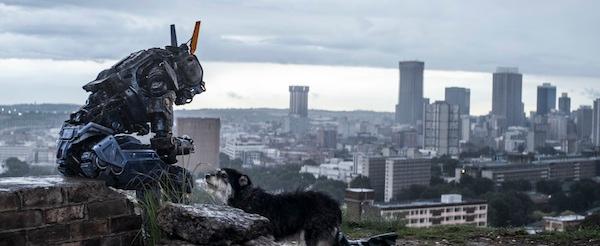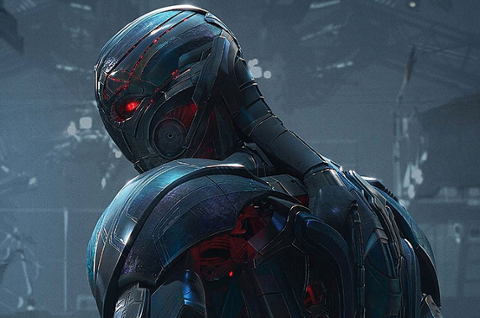Upload Your ResumeEmployers want candidates like you. Upload your resume. Show them you're awesome.
'Chappie': What It Takes to Render a Robot
In the new film Chappie, set a few years from now, a police robot is stolen and reprogrammed in a way that renders it capable of learning. The Powers That Be, viewing a sentient robot as an existential threat to the human race, devote a lot of firepower to wiping said robot off the face of the planet. The robot—named Chappie by its adoptive family—decides to fight back, and hijinks ensue. Influences-wise, Chappie recalls ‘80s sci-fi films such as Robocop and Short Circuit, layered atop some very heavy themes about artificial intelligence and human rights—in other words, it’s exactly the sort of film you’d expect from Neill Blomkamp, who also directed the similarly idea-packed “District 9.” Check out the latest VFX jobs. The visual-effects supervisor on Chappie, Image Engine’s Chris Harvey, has worked on films ranging from Watchmen to Zero Dark Thirty and Tree of Life. In an interview, he describes how rendering everything from Chappie’s unique point-of-view shots to digitally touching up the backgrounds in certain sequences required 150 special-effects experts, working for a number of companies. “The lighting and detail work are latest-generation stuff that couldn’t have happened too many years ago,” he said in an interview, describing the software used to create those effects. “But they went old-school in terms of motion capture [for Chappie and other robots] because the latest and greatest motion-capture rigs are cumbersome, and they shot this out in the world without a lot of set extensions or anything crazy like that.” In many respects, working on a visual-effects crew for movies or television can have a lot in common with other technology professions, considering the reliance on sophisticated software and hardware for rendering characters and environments. Getting into the profession, Harvey suggested, isn’t just a matter of taking classes online or in-person; given the close-knit nature of the effects community, it’s also worth seeking out mentors and forums that can introduce you to the intricacies and language of the world. “People are pretty friendly,” he added. Chappie is an excellent example of what a visual effects job entails, particularly on the software side of things. For a VFX crew, the work on a film begins long before the cameras roll. Decades ago, artists and engineers may have spent months building physical models and sets; today, those responsible for physical props will sit down with CG animators and specialists to figure out which aspects of the film will be done practically, and which will end up rendered via a workstation. In the case of Chappie, the design of the titular robot involved teams at Image Engine, which handled visual effects, and WETA Workshop, tasked with the physical-props side of the equation. For starters, Chappie needed to look realistic, like something you might honestly expect to see patrolling the streets a decade or two from now. Image Engine took the concept artwork created by Blomkamp and WETA and rendered it in three dimensions, refining the mechanics so the animated Chappie would move realistically for a six-foot-tall, gun-toting robot. Image Engine then shared its digital work with WETA, so the latter could build practical models. (Blomkamp comes from a background in effects work, which probably makes this process run more smoothly.) As the movie progresses, Chappie begins to take damage from bullets, flames, and thrown debris; if that wasn’t enough, he also ends up covered in graffiti. That sort of wear-and-tear complicated things for the effects team; WETA had to produce three physical Chappie “skeletons” and a multitude of body panels representing the increasing levels of damage, and Image Engine needed to make sure every inch of the digital Chappie was rendered accurately to match. But having a physical model also offered an upside for the digital artists, by providing a visual reference for atmospheric events such as rain. By seeing how water or dust flowed over the “real” Chappie, and how that affected the ambient lighting, they could create a more realistic digital version. On many movie and television sets, actors interact with a tennis ball or other prop as a stand-in for a digital character, which is subsequently painted into the scene during postproduction. Blomkamp took a different approach on Chappie, by having actor Sharlto Copley actually perform the role of the robot onset, and swapping him out later for the digital character. Copley wore a skintight gray suit, lined with markers for the digital animators’ reference, along with a chest-plate that gave him some of Chappie’s proportions, so he could interact with his surroundings in a way that more closely mirrored that of the robot. Digital animation is a skill and an art at the same time; it takes significant experience to render a character in a PC that can interact seamlessly with the physical world. And as anyone who’s worked in video games or movie animation knows, you need to give your character a soul. Having a real actor as the foundation of your animation is a big step toward imbuing it with the necessary vitality; but translating the nuances of that performance—especially when, as in Chappie’s case, the final character doesn’t have a human face—requires a deft touch on the part of the animator. It might be several years before we have real robots walking the streets, but in the meantime Chappie provides a pretty realistic view into what our silicon-based brethren could look like.
Image: Sony



